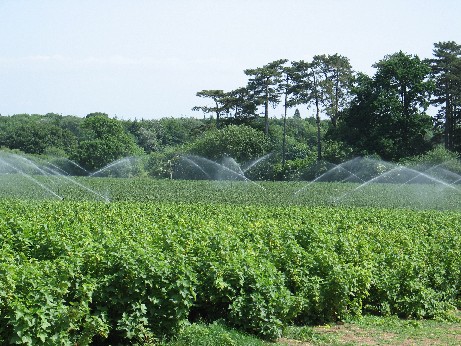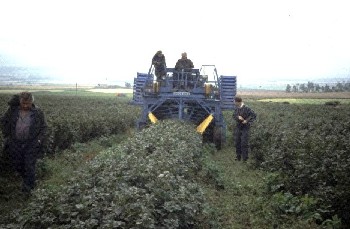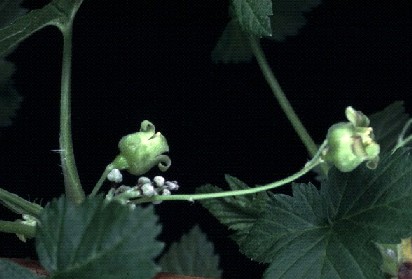 Most blackcurrants in the UK are grown under contract to and 95% of the crop goes to the production of the fruit drink Ribena. Modern blackcurrant cultivation takes place in large fields and the ripe berries are harvested by machine as shown in the photographs below.
Most blackcurrants in the UK are grown under contract to and 95% of the crop goes to the production of the fruit drink Ribena. Modern blackcurrant cultivation takes place in large fields and the ripe berries are harvested by machine as shown in the photographs below. Blackcurrants generally require between 800-1600 hours of temperatures below 7oC depending on cultivar before buds will break in the spring (Barney & Hummer 2005). Lack of chilling results in uneven bud break and poor eventual fruit quality at harvest, although if a cultivar has a low chilling requirement there is an increased risk of frost damage due to early bud break. Recent reviews of historical cropping and meteorological data (Atkinson et al. 2004) suggest that the amount of winter chilling has declined in recent years, so breeding of better-adapted cultivars is a high priority for the future.
Blackcurrants generally require between 800-1600 hours of temperatures below 7oC depending on cultivar before buds will break in the spring (Barney & Hummer 2005). Lack of chilling results in uneven bud break and poor eventual fruit quality at harvest, although if a cultivar has a low chilling requirement there is an increased risk of frost damage due to early bud break. Recent reviews of historical cropping and meteorological data (Atkinson et al. 2004) suggest that the amount of winter chilling has declined in recent years, so breeding of better-adapted cultivars is a high priority for the future.

References
- Atkinson CJ, Sunley RJ, Jones HG, Brennan RM & Darby P (2004) Desk study on winter chill in fruit. Defra Report CTC 0206 .
- Barney DL & Hummer KE (2005) Currants, gooseberries and jostaberries: a guide for growers, marketers and researchers in North America. Haworth Press: Binghampton, NY.
